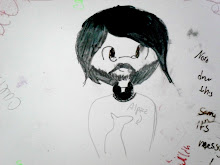




More photos from Ghana, all from the Volta region east of Accra along the Togolese border.
1. This is our tro-tro that we took from Accra out toward Hohoe. We broke down at the Ho-Hohoe junction and spent an hour or so killing time on the side of the road. During our break, we found out the answer to one of life's timeless questions when we saw a chicken cross the road to avoid being hit by a speeding tro-tro. So, now you too know the answer to that most ageless of questions.
2. The Ho-Hohoe junction sign. I'm not entirely sure why I find the whole Ho-Hohoe bit so amusing, but I do. Ho is the capital of Volta region and was actually the administrative center of German Togoland before World War I. After the war, the German holdings in Africa were split by the British and French; the French got Cameroon and what is now Togo, and the British got Namibia, Tanzania, and a sliver of German Togoland that became a new region in their Gold Coast colony. That region is...the Volta region!
3. Tafi Atome village, home of one of Ghana's monkey sanctuaries.
4. The remains of Fort Prinzenstein, a Danish slave fort in Keta, also in Volta region. The fort more-or-less marks the end of what was known as the Gold Coast and the beginning of what was designated the Slave Coast, which ran from Keta (or the mouth of the Volta, depending on who you ask) across present day Togo, Benin, and Nigeria - some 5 million Africans from the Slave Coast were transported from Africa to the Americas, Europe, and the East Indies to work as slaves. Fort Prinzenstein was a moderate sized fort and operated as a slaving center for about a century. The slave trade, and then slavery, was abolished, and the fort foundered, and so the Danish sold it to the British in the 1850s.
5. The beach in Keta; it's not one of the most striking ones I've seen so far, but it's pleasant. Keta is on a narrow isthmus between Keta Lagoon and the Gulf of Guinea. This picture is of the Gulf; the lagoon is much shallower, lacks sizeable waves, and is a muddy brown color.


0 Comments:
Post a Comment
<< Home